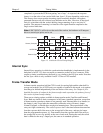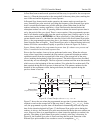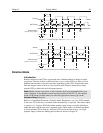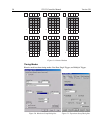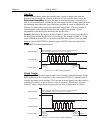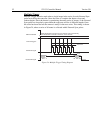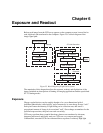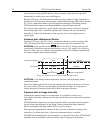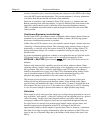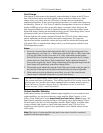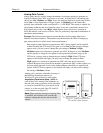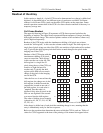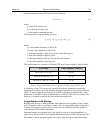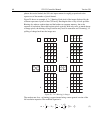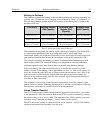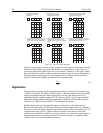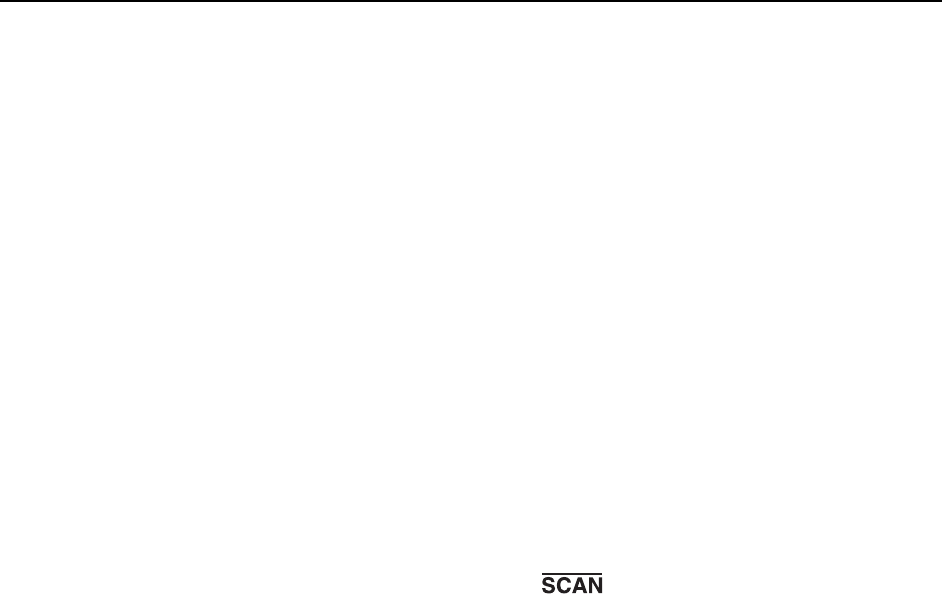
Chapter 6 Exposure and Readout 55
accuracy. Intensifier gain is varied by adjusting the voltage across the MCP or the voltage
across the MCP output and the phosphor. This second parameter is a factory adjustment,
as it affects both the gain and the resolution of the intensifier.
Detection of extremely weak Continuous Wave (CW) signals, e.g., luminescence and
Raman scattering from solid state samples, is typically limited by the dark current of the
intensifier’s photocathode, usually referred to as the equivalent brightness intensity
(EBI). All standard intensified cameras made by Roper Scientific have the lowest EBI
values possible.
Continuous Exposure (no shuttering)
For full-frame CCDs, the standard camera is equipped with an integral shutter. However,
inasmuch as it is possible to order the camera without a shutter, the following general
discussion of unshuttered operation is provided.
Unlike video rate CCD cameras, slow scan scientific cameras require a shutter to prevent
"smearing" of features during readout. This is because during readout, charge is moved
horizontally or vertically across the surface of the CCD. If light is falling on the CCD
during readout then charge will continue to accumulate, blurring the image along one
direction only.
For some experimental applications a shutter is not required because no light falls on the
CCD during readout. If the light source can be controlled electronically via the
NOTSCAN or SHUTTER signal (from the
BNC), the CCD can be read out in
darkness.
Cameras with frame-transfer capability may be used with or without a shutter. When
operating without a shutter, image smearing may occur, depending on the exact nature of
the experiment. This effect, caused by light falling on the CCD array as the charge is
shifted to the masked area, occurs only if the CCD is illuminated during shifting. In the
case of intensified cameras (ICCDs), this effect can be eliminated by using a fast
phosphor and gating the intensifier at the same frame rate as the CCD.
The fraction of total signal due to smearing is the ratio of the amount of time spent
shifting divided by the exposure time between frames. Faster shifting and/or longer
exposure times will minimize this effect. Note that while 1% smear is insignificant in an
8-bit camera (256 gray levels), in a 12-bit camera (over 4,000 gray levels) 1% smearing
is over 40 counts, enough to obscure faint features in a high dynamic range image.
Saturation
When signal levels in some part of the image are very high, charge generated in one pixel
may exceed the "well capacity" of the pixel, spilling over into adjacent pixels in a process
called "blooming." In this case a more frequent readout is advisable, with signal
averaging to enhance S/N (Signal-to-Noise ratio) accomplished through the software.
For signal levels low enough to be readout-noise limited, longer exposure times, and
therefore longer signal accumulation in the CCD, will improve the S/N ratio
approximately linearly with the length of exposure time. There is, however, a maximum
time limit for on-chip averaging, determined by either the saturation of the CCD by the
signal or the loss of dynamic range due to the buildup of dark charge in the pixels (see
below).



